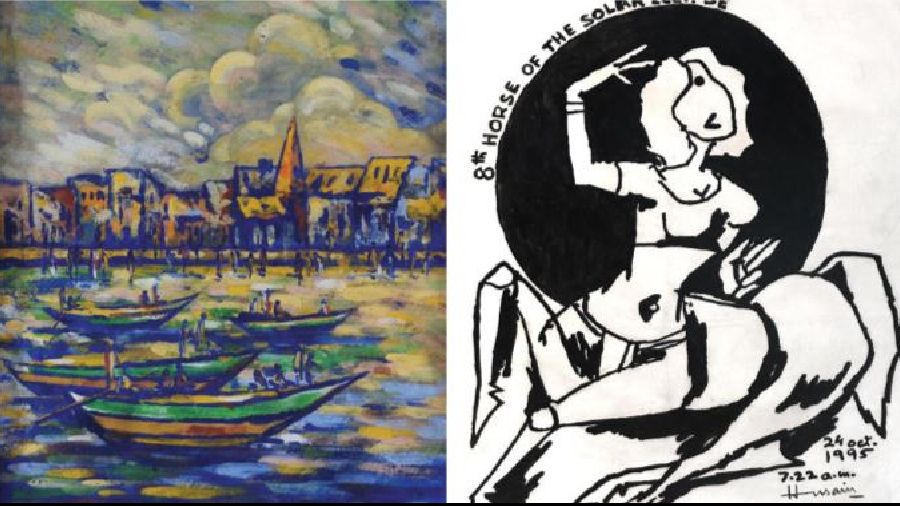How does one go about ‘reviewing’ the masters whose works were on display at Aakriti Art Gallery’s recent show, Masterpieces-2023? Is there anything left to say that has not already been said about the likes of M.F. Husain, Abanindranath Tagore and Jamini Roy? What one can do — besides marvelling at the artistic genius on display — is probe the way in which the exhibition was mounted.
It all begins with an idea. Either there is a central theme based on which artworks are selected or disparate artists are woven into a narrative thread through careful curation. While this show did have a loose idea — highlighting the skills of artists who have shaped the idiom of Indian art over the years — which it adhered to throughout, the artists selected were disparate and not bound by theme, period or even chronology.
M.F. Husain dominated in terms of the sheer number of his pieces on display. The equine figure, which fascinated Husain throughout his career, shone in a work featuring a centauress whose sinewy body is rearing for action against an eclipsed sun (picture, right). Those familiar with the artist’s oeuvre will recognise this as the same mythical creature residing on the margins of his renowned painting, 8th Horse of the Solar Energy. Another rare find was a cheeky self-portrait by the artist, brushes sticking out of his pockets, a New Delhi to London baggage tag attached to his legs, and his hand holding one of his controversial portrayals of Indian goddesses to cover his face.
The intricacies of the carved Yakshi illuminated by a shaft of light in Shyamal Dutta Ray’s Visitor I were as spellbinding as the cave sculptures of India themselves. Jamini Roy’s landscapes (picture, left) shimmered with their brightly-hued impressionist details. Bikash Bhattacharjee’s delicate pencil sketch of a Maidan scene was full of nostalgia and Sunil De’s abstract hieroglyphs came together to form a visual symphony. K.G. Subramanyan’s cover illustration for a book called Saptaparni was playful and intriguing.











